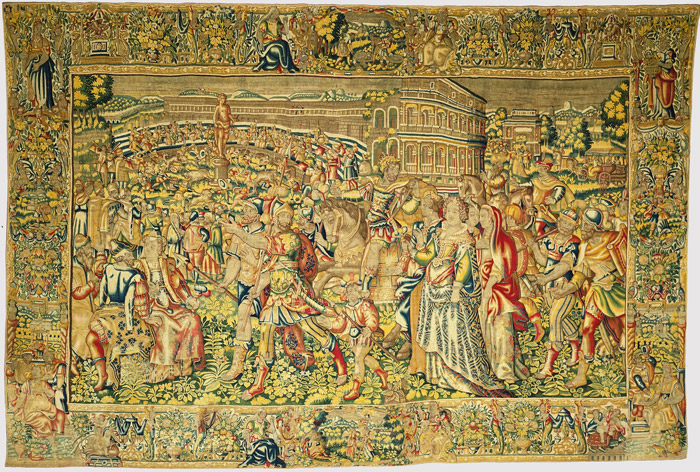An exceptional tapestry heritage

The notion of the "Seven" wonders of the world has always been rather vague and they were variously defined according to the author. What is more, woven tapestries dating from the late 16th and 17th centuries never represented all seven of the wonders.
The theme was hugely popular with Brussels ateliers from the late 16th century onwards, inspired by the 1572 engravings after Van Heemskerk, which were reproduced in 1614 by De Vos.
Nevertheless, the content was readily adapted to suit the large-scale, decorative demands of the tapestry.
The Réattu Museum's wall hangings make up an extraordinary ensemble, both in terms of the number of pieces and the quality of the tapestries themselves. They represent : The Temple of Diana in Ephesus, the Mausoleum of Halicarnassus, the Hanging Gardens of Babylon (a fragment), the Colossus of Rhodes and the Colosseum.
They came into the museum's possession in 1868, as part of the legacy of Elisabeth Grange, daughter of the painter, Jacques Réattu. He had acquired them in 1796, when he bought the Commanderie de Saliers. In fact, the tapestries were among the furnishings of the Order of Malta, who owned the buildings until the Revolution. Before that, they were in the possession of Christina, Queen of Sweden (1632-1654).
After decades as part of the permanent exhibition, the tapestries of the Seven Wonders of the World have been withdrawn from show and will be subject of an exhibition in due course.